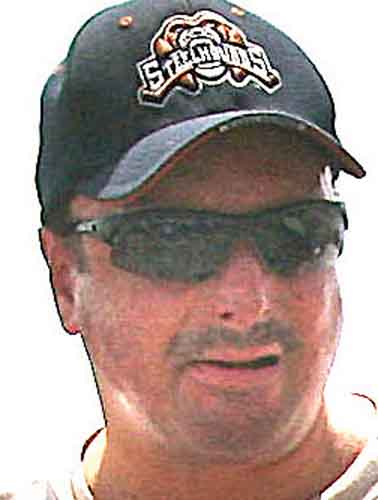Verdict absolves Ford in lawsuit

Ross Linert

Adrien Foutz
YOUNGSTOWN
A jury verdict in favor of the Ford Motor Co. is a vindication of the company’s police cruiser design, according to a lawyer for the company.
“It’s the police car of choice. It’s a safe vehicle,” said James Feeney, who defended the automaker in a two-week trial of a $19 million lawsuit by a former Austintown patrolman who was severely burned in a high-speed crash.
The former police officer, Ross J. Linert, and his wife, Brenda, said he was badly burned because of what the couple alleged were the cruiser’s defects.
“This puts the responsibility for this accident squarely where it belongs,” Feeney said, adding that the drunken driver who rear-ended the cruiser Linert was driving was responsible for his injuries.
Adrien Foutz, 25, of Girard, pleaded no contest to aggravated vehicular assault and served 19 months in prison after driving a two-ton Cadillac at 115 mph into the back of the 2005 Crown Victoria Police Interceptor cruiser Linert was driving at 35 mph.
The crash occurred at 1:08 a.m. Nov. 11, 2007, on North Meridian Road under Interstate 680. Foutz’s blood-alcohol level was 0.279 — more than three times the legal limit.
“One hundred and fifteen mph into the back end of a vehicle — what vehicle isn’t at risk for something bad to happen?” Feeney asked. “Officer Linert sustained these injuries, and it was a very, very unfortunate situation,” he added.
Foutz had been a defendant in the lawsuit, but reached an undisclosed settlement with the Linerts just before the trial began.
The Linerts’ lawyer, Bradley M. Lakin, expressed disappointment with the verdict but said afterward that he couldn’t think of anything he would have done differently. Lakin said he’d have to confer with the Linerts before any decision is made on whether to appeal the verdict.
“It’s one of those cases that we thought came in, evidence-wise, as good as we could expect, especially in light of the admissions by Ford that they had a problem at the plant and they fixed it. We thought we had a clear defect case,” Lakin said.
Lakin was referring to testimony by Steve Haskell, a Ford manufacturing engineer, that, in 2007, Ford increased the thickness of a metal crimp overlap where gasoline leaves the fuel tank and is sent to the engine, making the crimp “more robust.”
Lakin had alleged that the thinness of the crimp in Linert’s cruiser caused the sending unit to dislodge in the crash and leak the fuel that caused the fire that burned Linert.
Despite hearing 71 pages of instructions read to them by visiting Judge Thomas P. Curran, the jury of five women and three men deliberated for only about 90 minutes before rendering a 7-1 verdict in favor of Ford and awarding no money to the Linerts on Tuesday morning. A minimum of six jurors must agree on any verdict in a civil case.
Lakin said he was surprised by the speed of the jury’s deliberations “particularly in light of the evidence that was presented on the manufacturing defect claim as well as the damages in this case.”
The jurors declined to comment as they left the jury room after rendering their verdict.
“I’m defending a product and the people that designed and tested it that know what they’re doing and have gone the extra mile for police,” Feeney said.
The fact that Ford has an 85 percent share of the U.S. police car market is “a pretty strong indication” that police are generally satisfied with Ford cruisers, Feeney added.
 43
43
